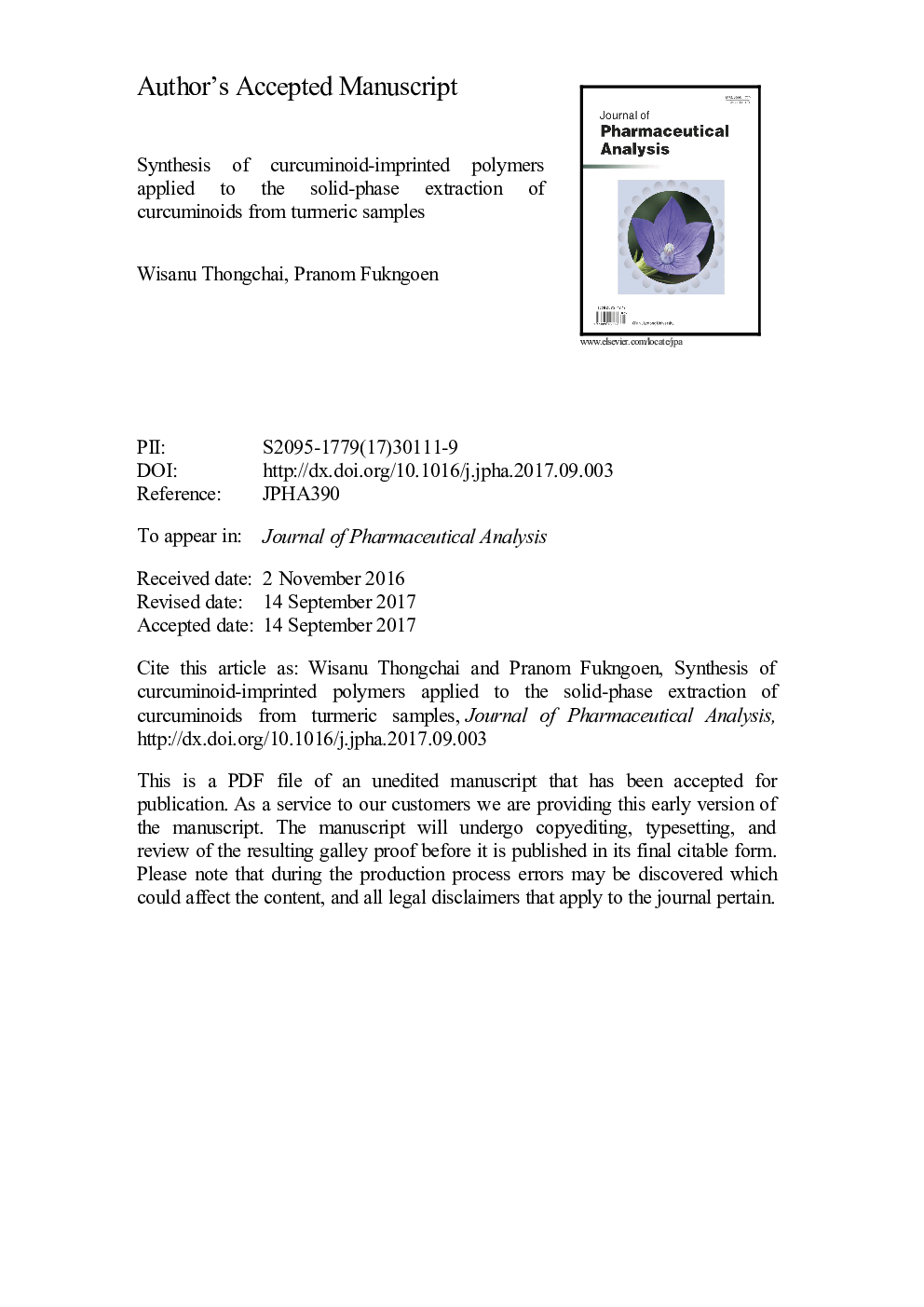| Article ID | Journal | Published Year | Pages | File Type |
|---|---|---|---|---|
| 8521119 | Journal of Pharmaceutical Analysis | 2018 | 27 Pages |
Abstract
A molecular imprinting polymer technique was successfully applied to precipitation polymerization by using styrene as a functional monomer, curcuminoids as templates, acetonitrile as a porogenic solvent, benzoyl peroxide as the initiator, and ethylene glycol dimethacrylate as the crosslinker. The effects of interaction on the adsorption capacity of the molecularly imprinted polymer (MIP) and non-imprinted polymer (NIP) were investigated. A comparison of the adsorption capacity for MIP and NIP indicated that the NIP had the lowest adsorption capacity. The curcuminoid-imprinted polymer (Cur-MIP) was synthesized from 0.0237 mmol of styrene, 47.0 g of acetonitrile, 1.0238 mmol of ethylene glycol dimethacrylate, 0.0325 mmol of curcuminoids, and 0.2480 mmol of benzoyl peroxide. A high-performance liquid chromatography method with fluorescence detection was developed and validated for various chromatographic conditions for the determination of the curcuminoids in turmeric samples. The sample solution was separated using the Cur-MIP via solid-phase extraction and analyzed on a Brownlee analytical C18 column (150 mm à 6 mm, 5 µm) using an isocratic elution consisting of acetonitrile and 0.1% trichloroacetic acid (40:60, v/v). The flow rate was maintained at 1.5 mL/min. The fluorescence detector was set to monitor at λex = 426 nm and λem = 539 nm. The quantification limit values were found to be 16.66, 66.66, and 33.33 µg/L for curcumin, demethoxycurcumin, and bisdemethoxycurcumin, respectively. Thus, we concluded that the Cur-MIP and high-performance liquid chromatographic-fluorescence method could be applied to selective extraction and could be used as a rapid tool for the determination of curcuminoids in medicinal herbal extracts.
Keywords
Related Topics
Health Sciences
Pharmacology, Toxicology and Pharmaceutical Science
Pharmaceutical Science
Authors
Wisanu Thongchai, Pranom Fukngoen,
